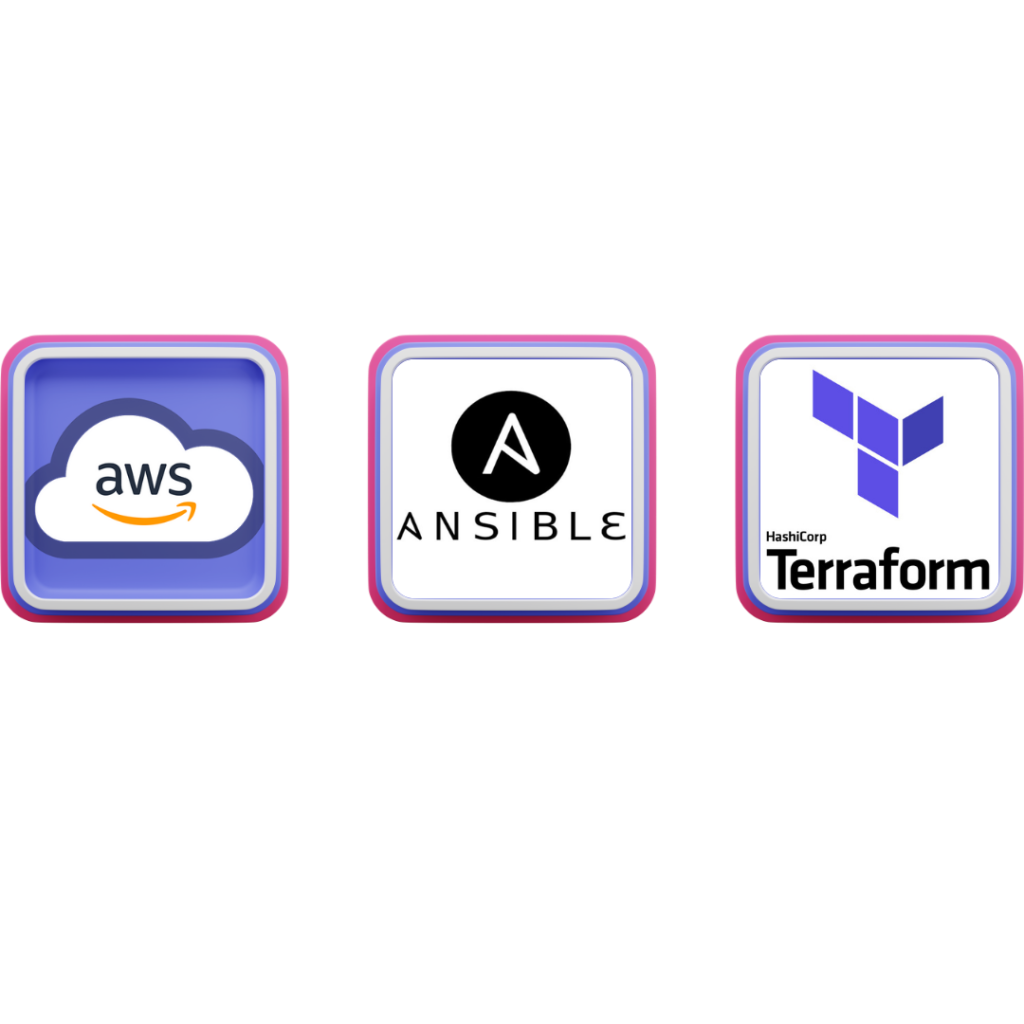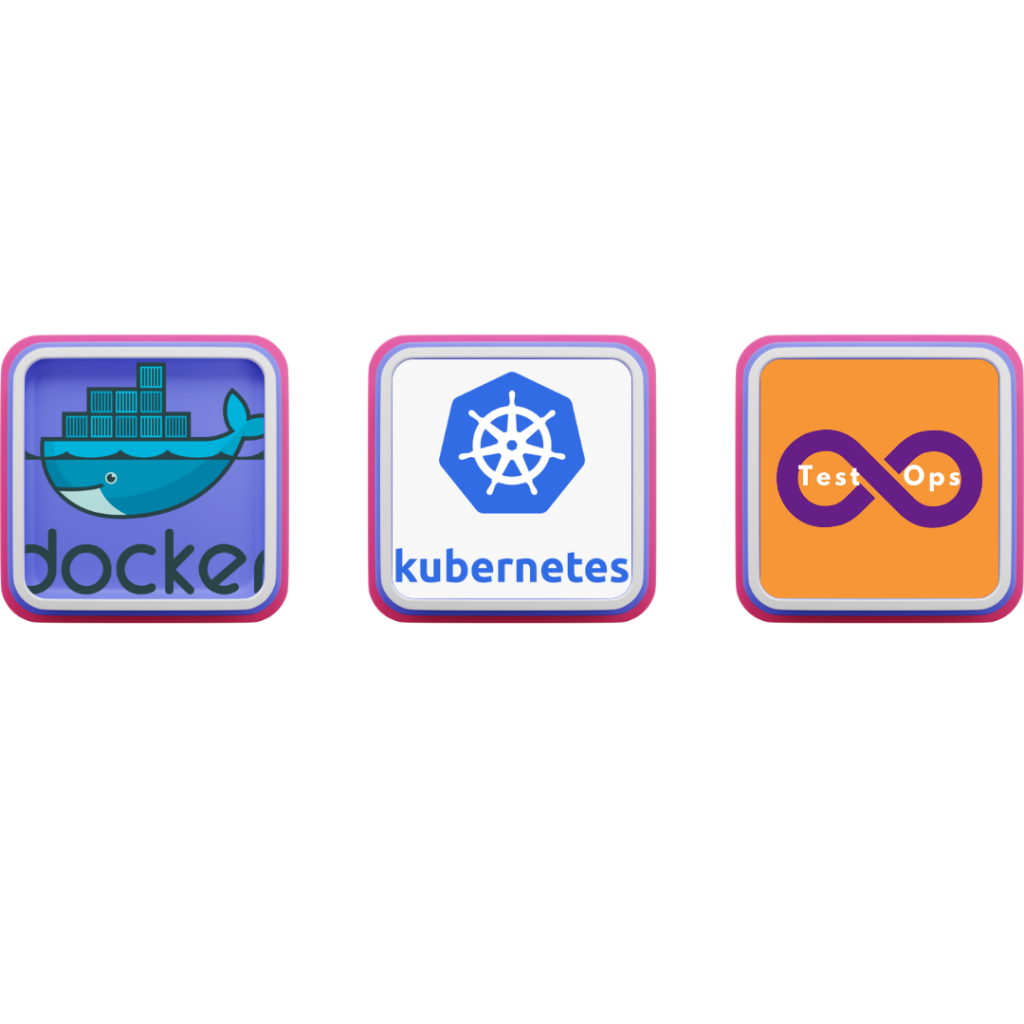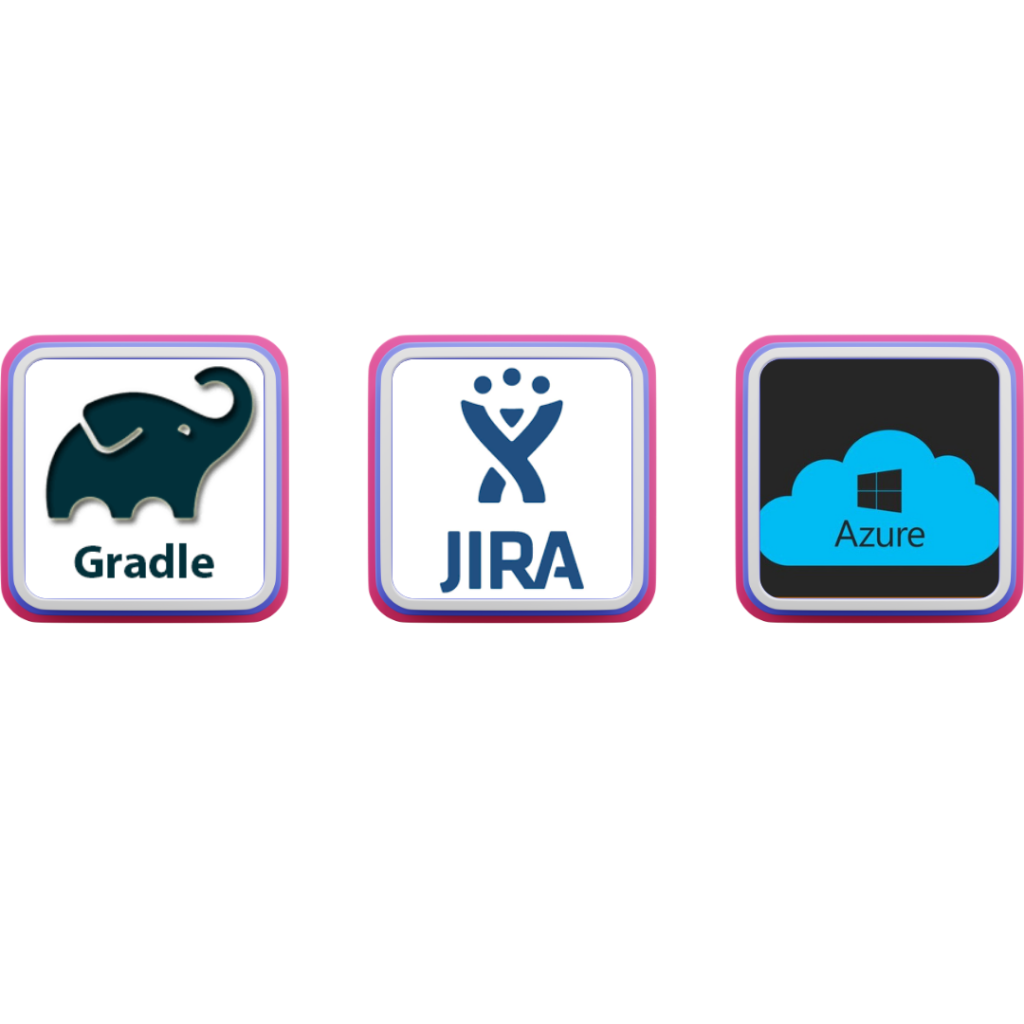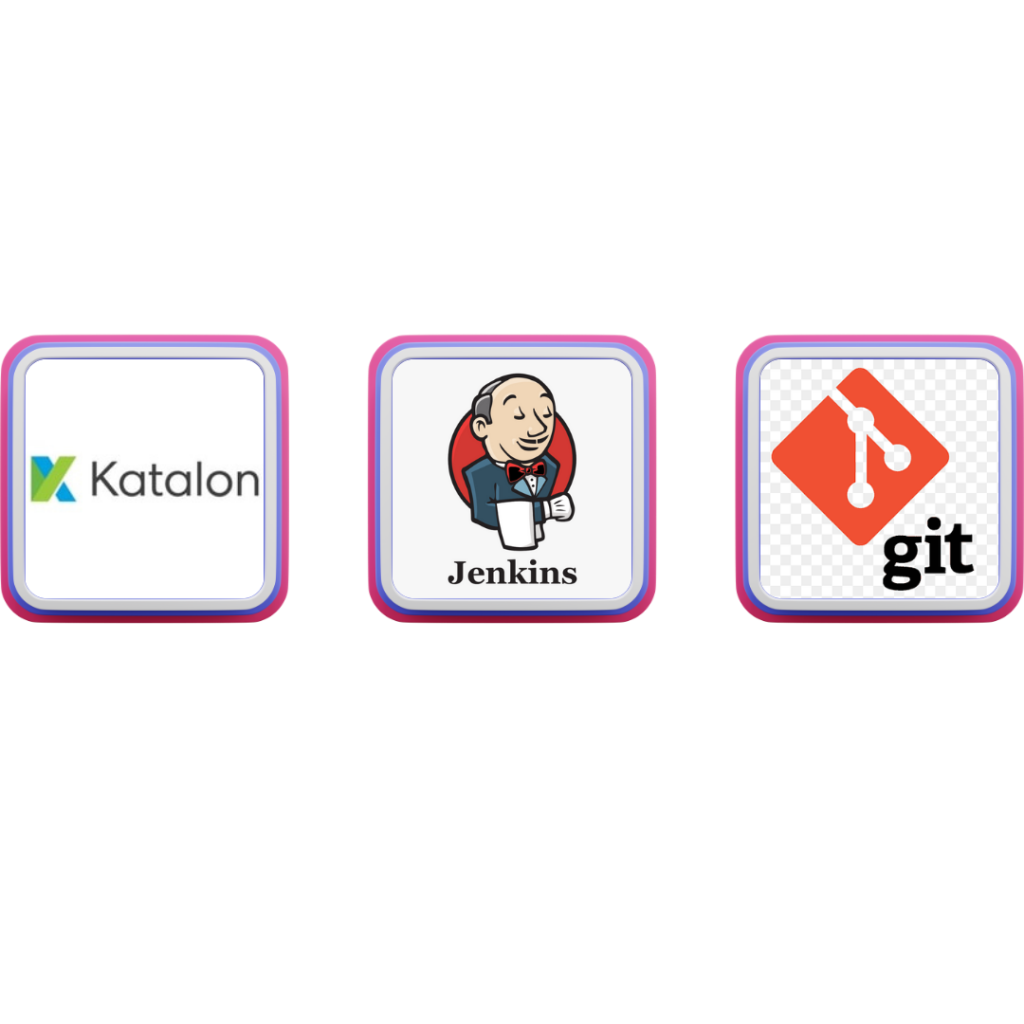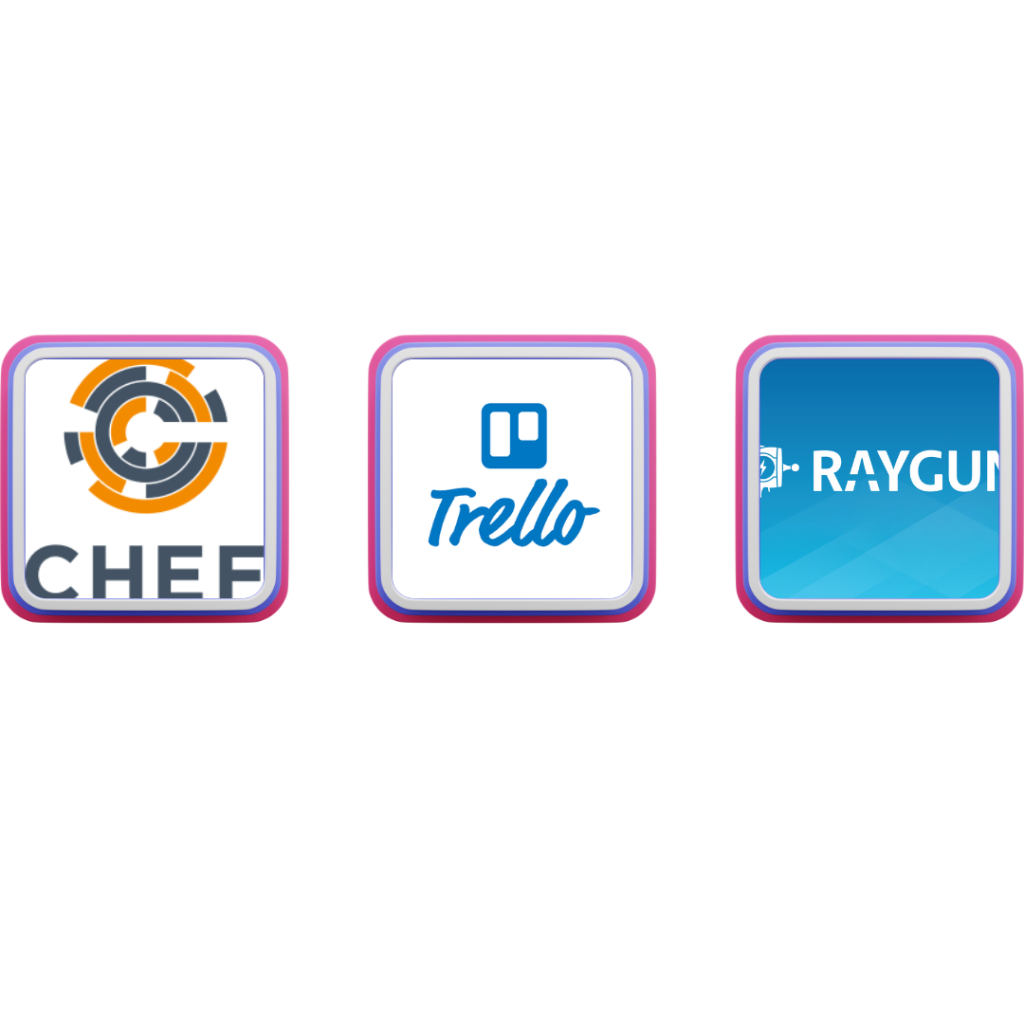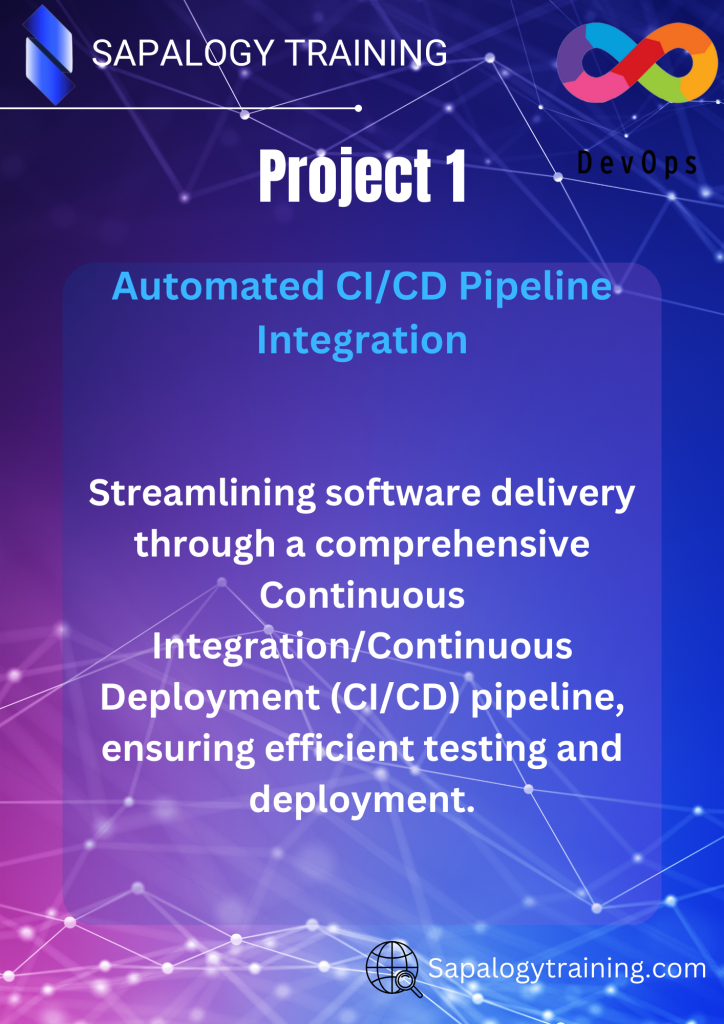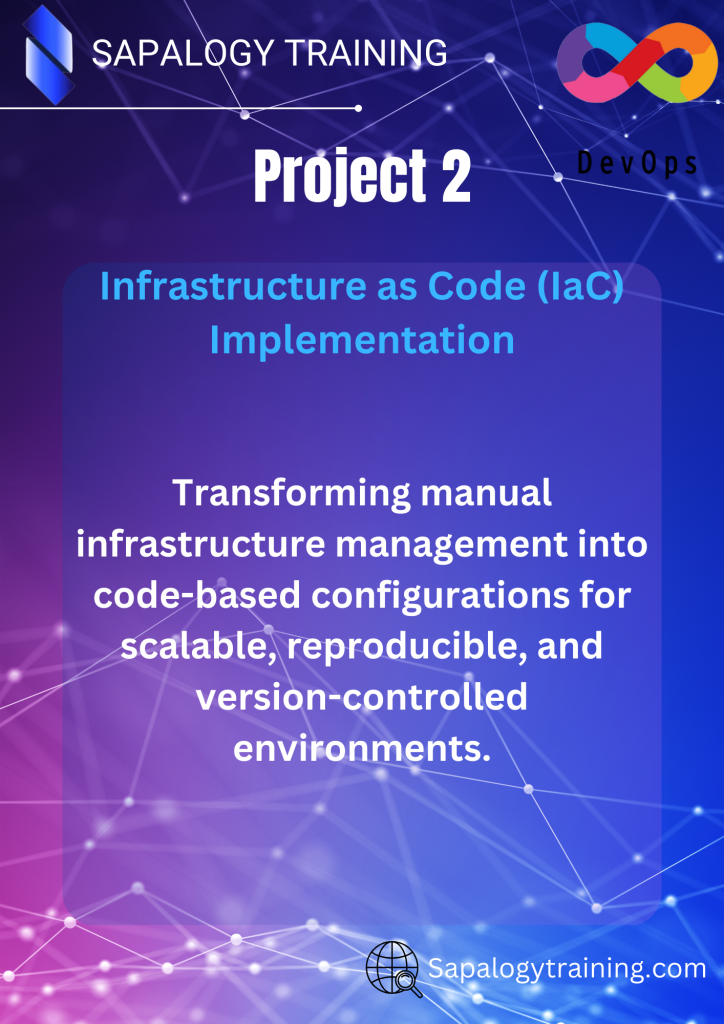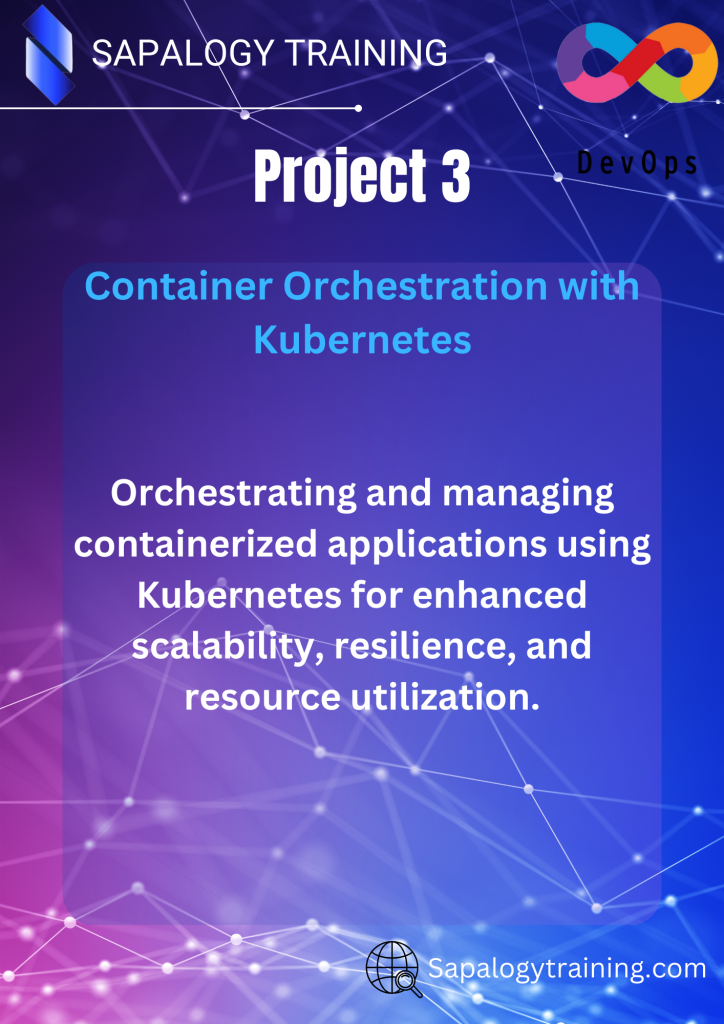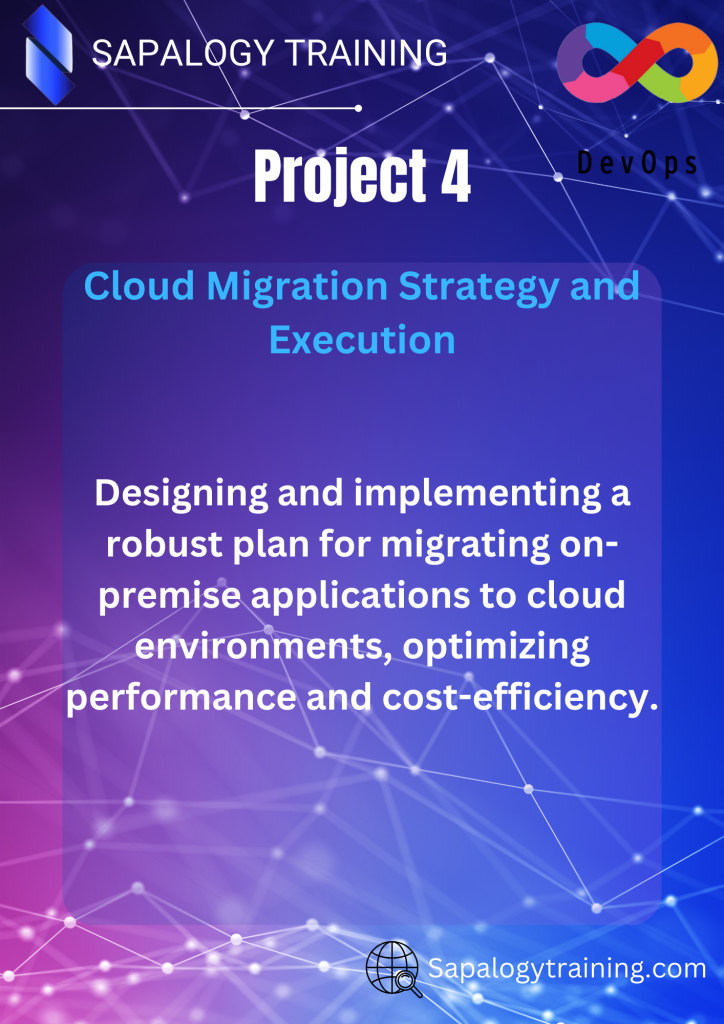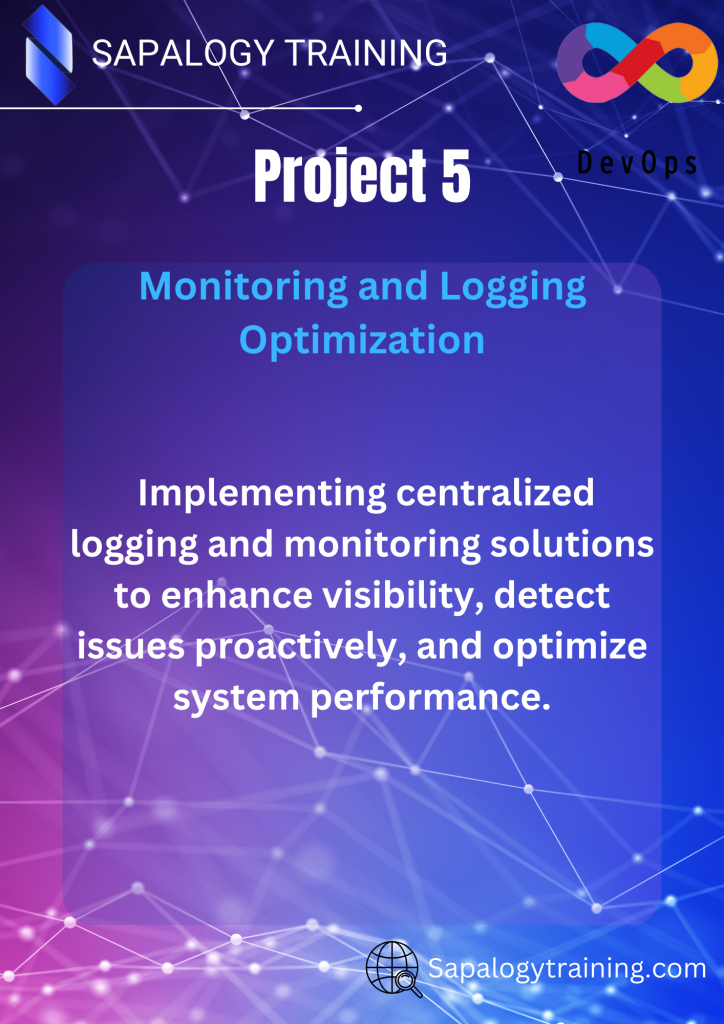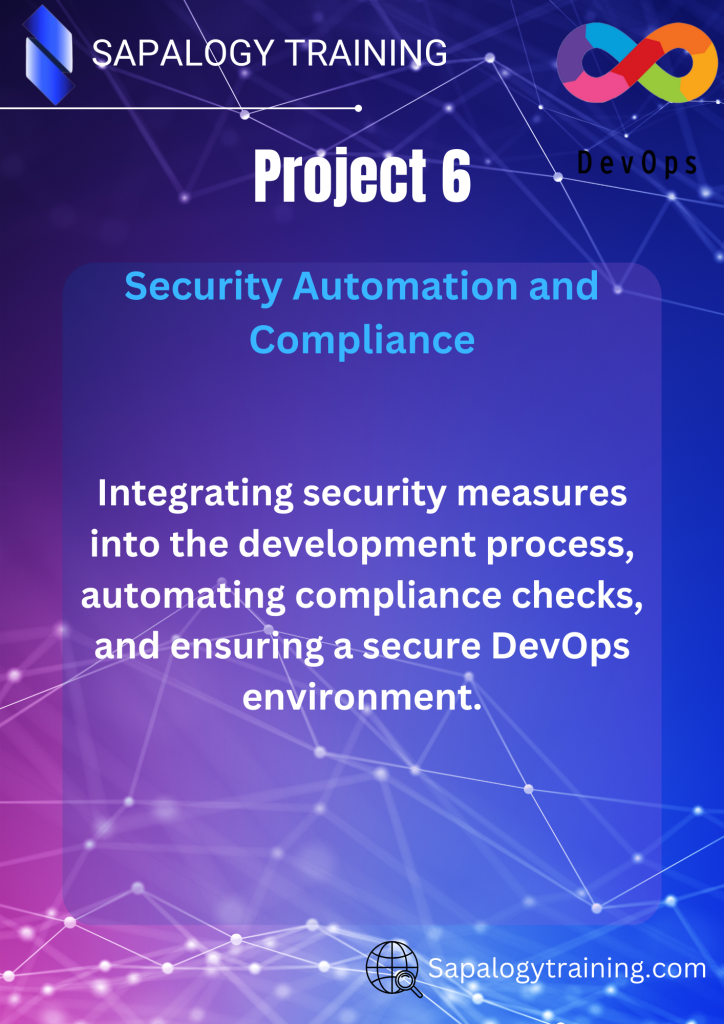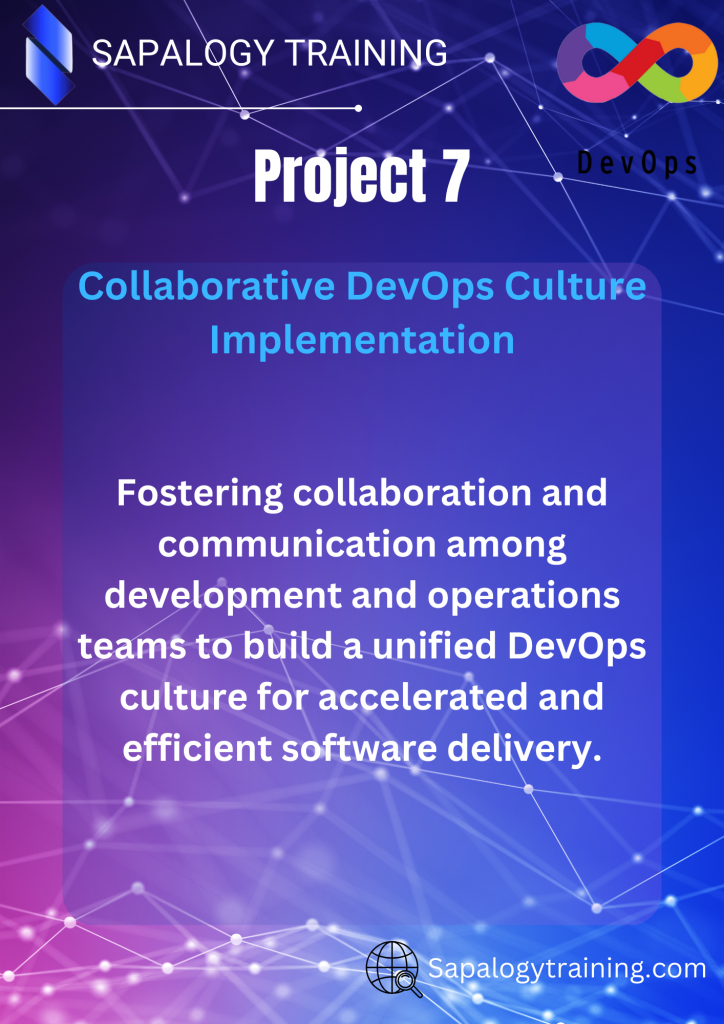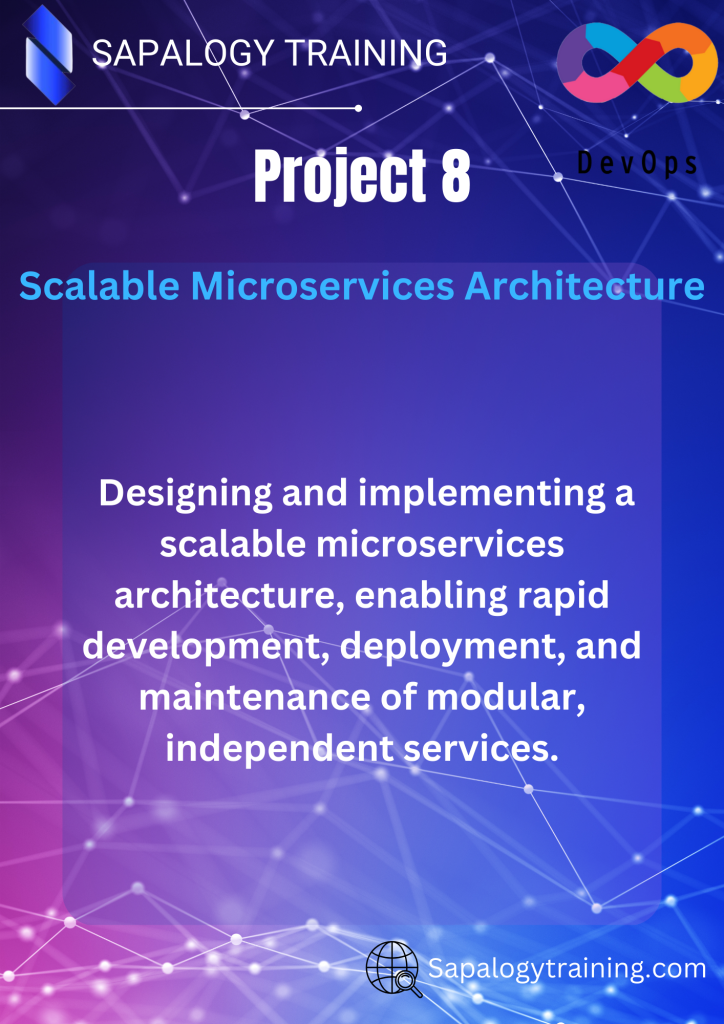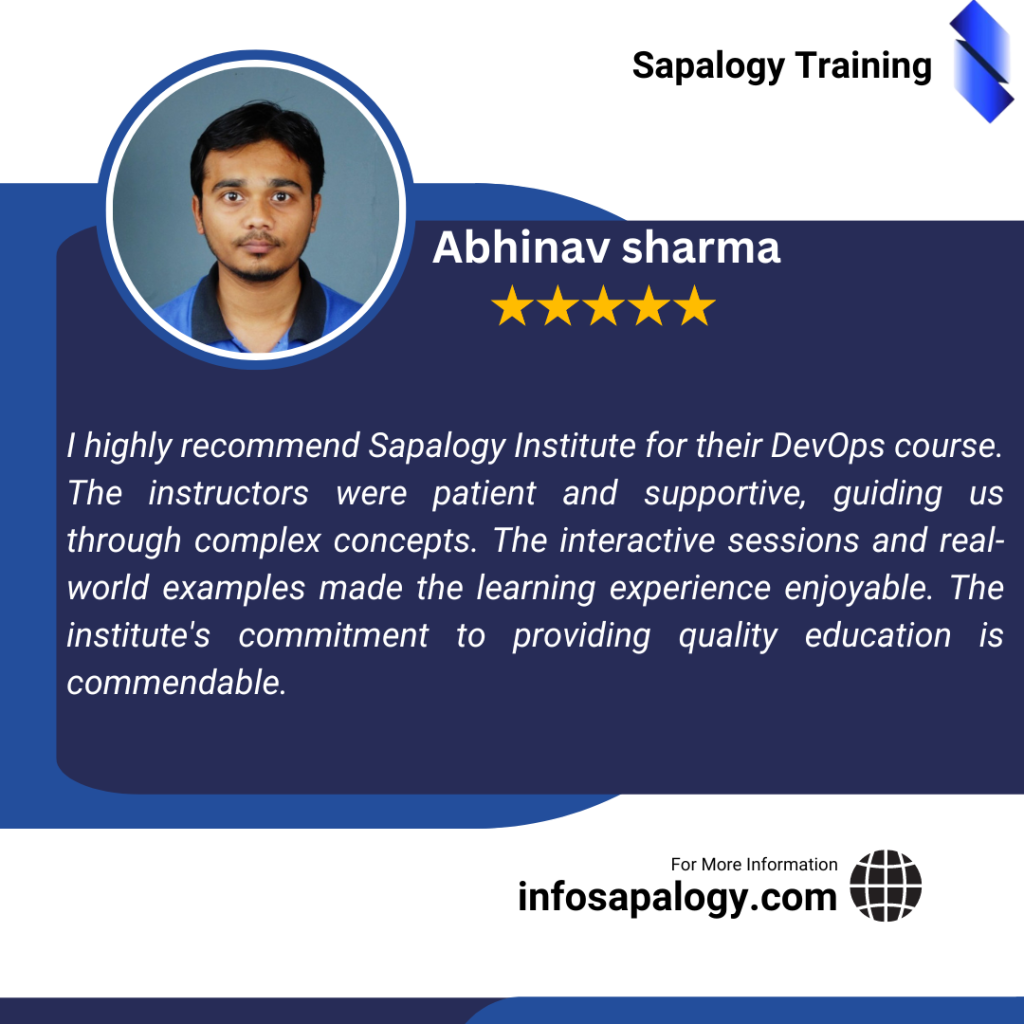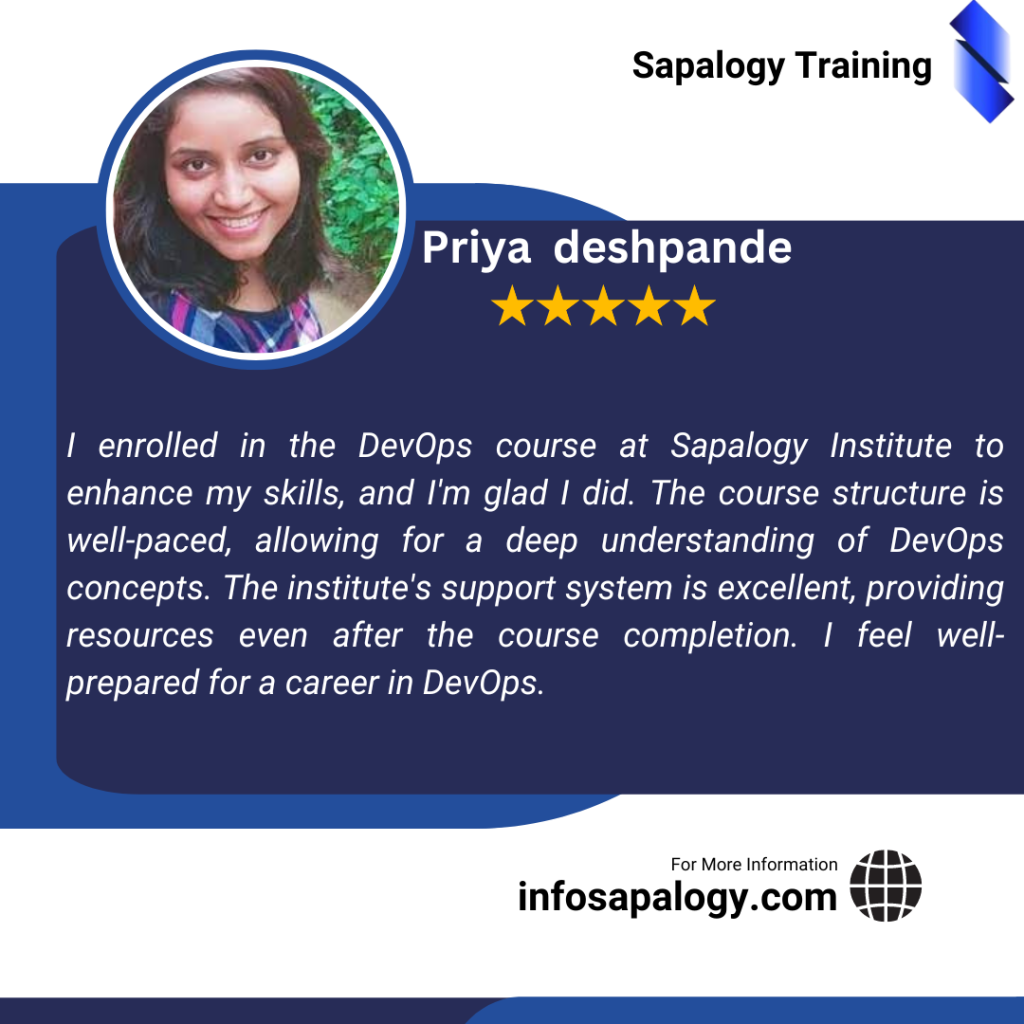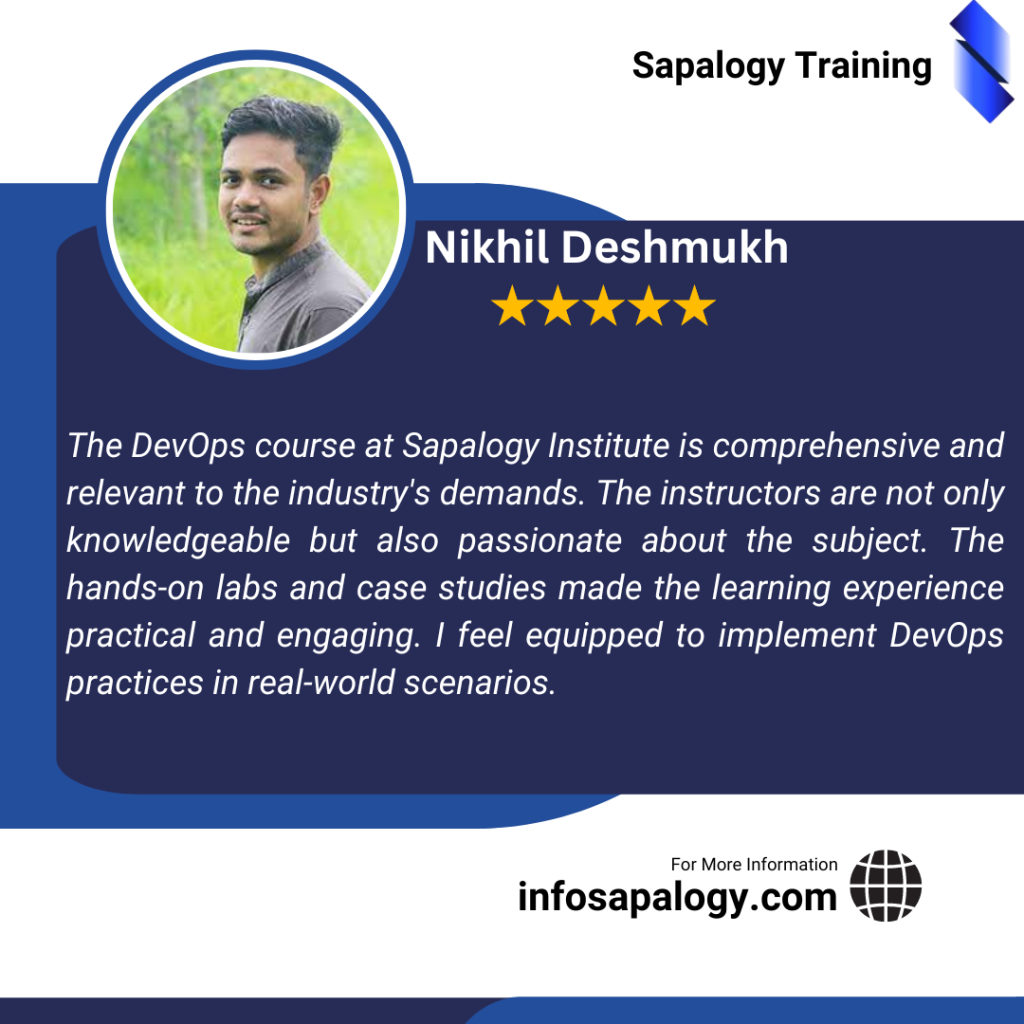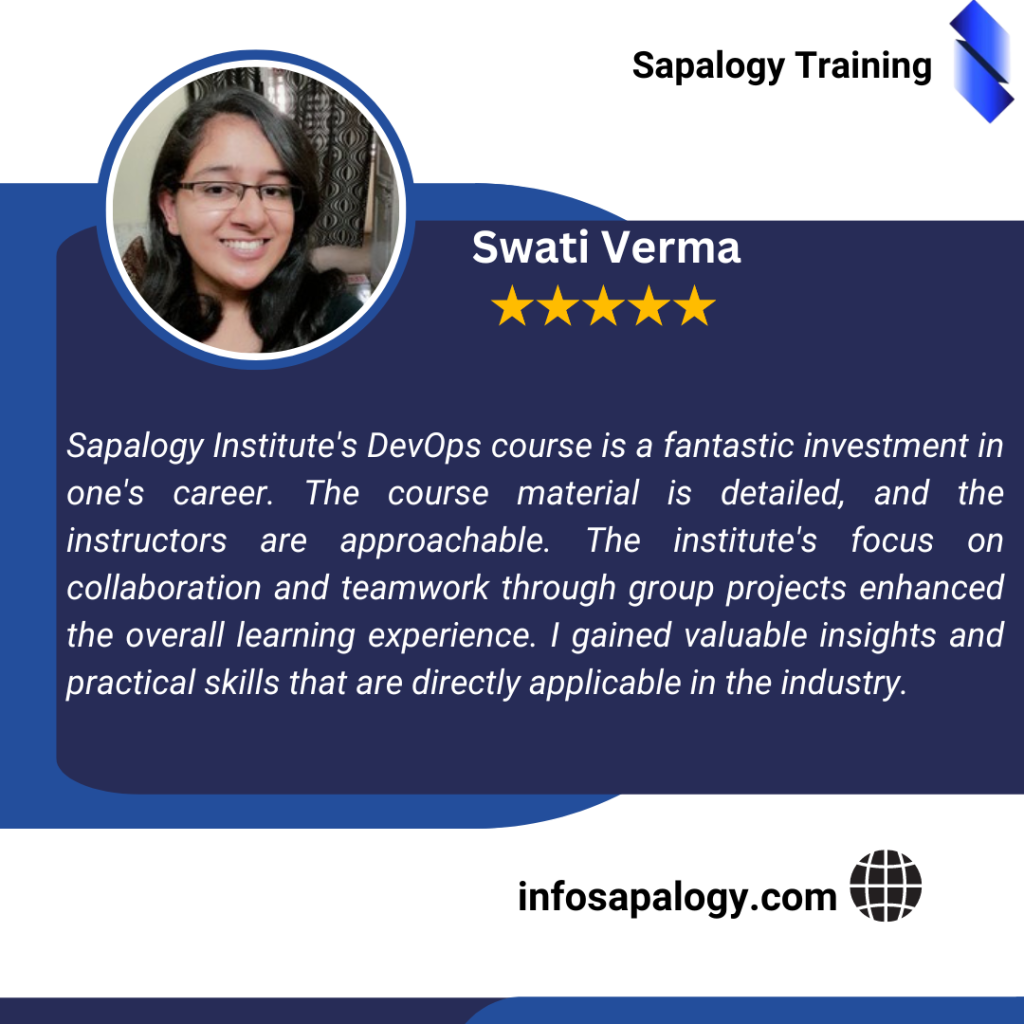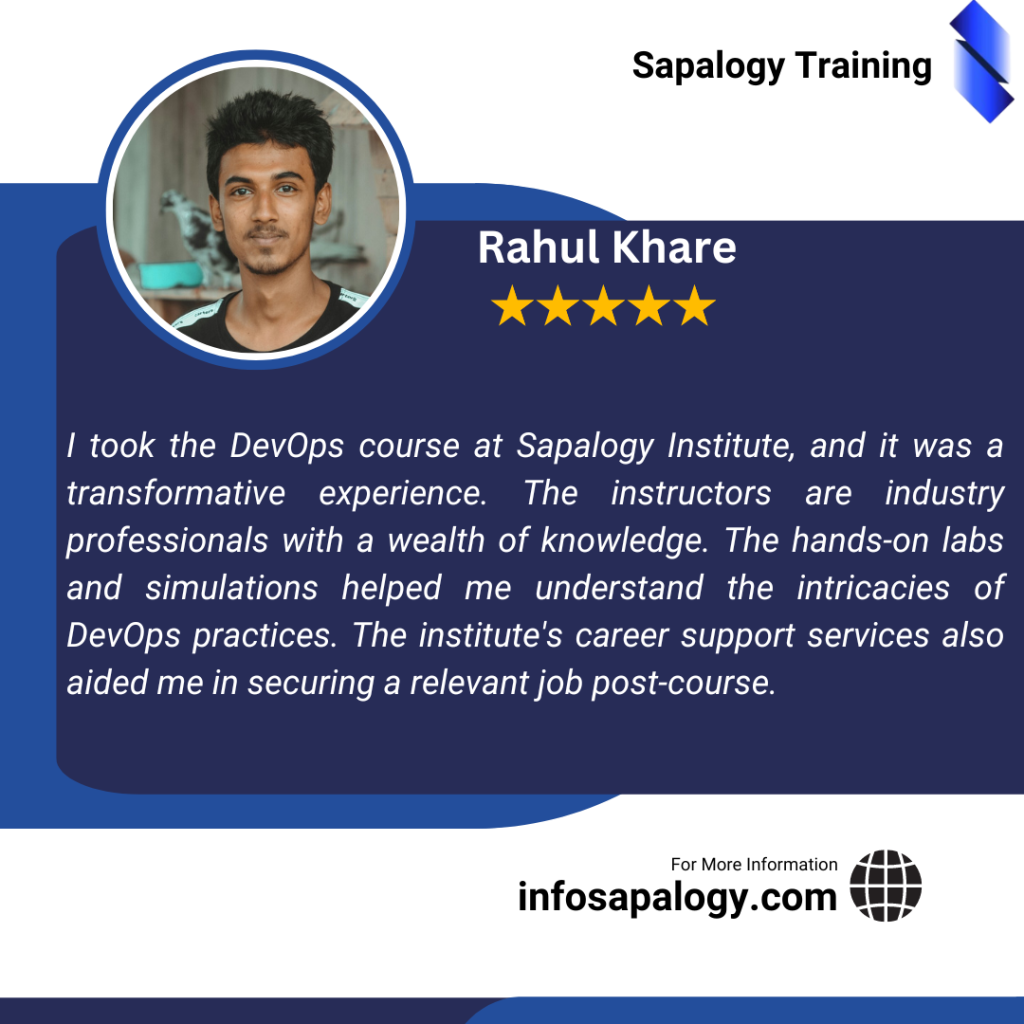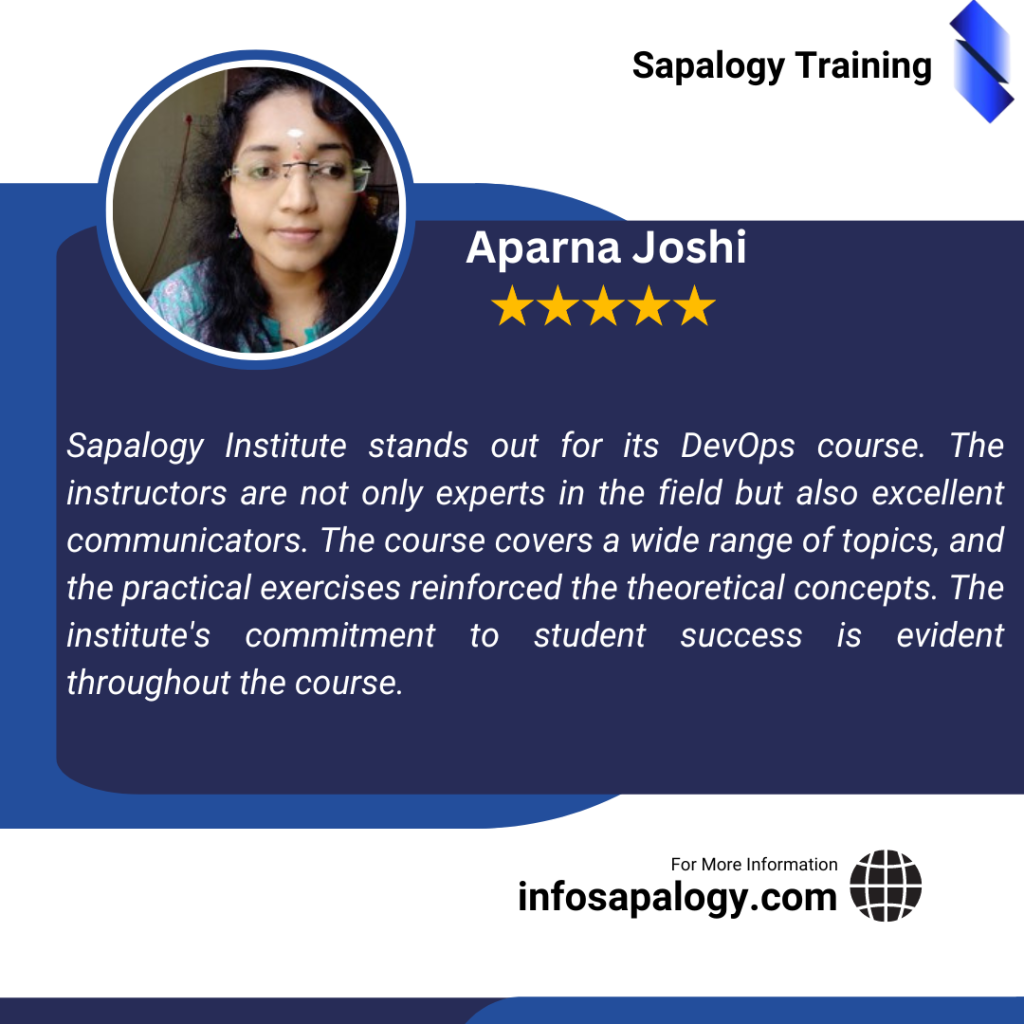Best DevOps Training
Best DevOps Training by Sapalogy offers you the best DevOps training in nagpur for freshers and experience candidate in nagpur, with expert guidance and 100% guraanteed placement assistance. Our DevOps training course covers every technical topics in details and the student is left with real-time hand on experience.
Our practical, Job-oriented training program will not only provide you with a certificate but also with knowledge equivalent to around 2+ years of field experience. We value your time as much as over. Hence we invented to train you in DevOps in just 5 months.
All the topics will be covered in detail and also include.
- Resume preparation
- Interview practice
- 6 month internship
- with 100 % job opportunities guaranteed program.
Contact us now!
What is DevOps ?
- DevOps is a mixture of software program improvement (dev) and operations (ops). It is described as a software program engineering technique which goals to combine the paintings of improvement teams and operations teams by way of facilitating a culture of collaboration and shared duty.
- DevOps emphasizes communication and collaboration between development and operations teams to break down silos and improve efficiency.
- Automation plays a crucial role in DevOps, enabling rapid and consistent deployment, testing, and infrastructure management.
- Following are the BangBit DevOps Toolchain.
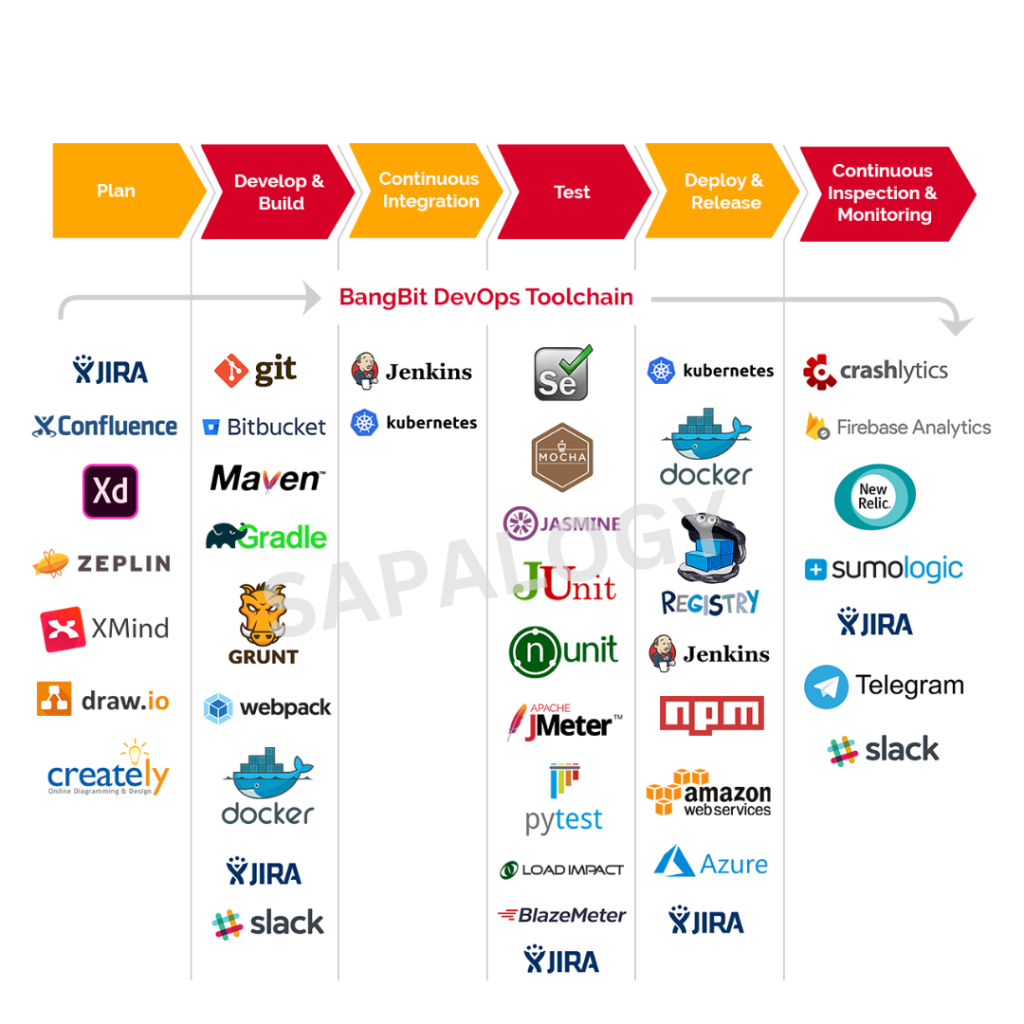
- Following are the skills of DevOps.
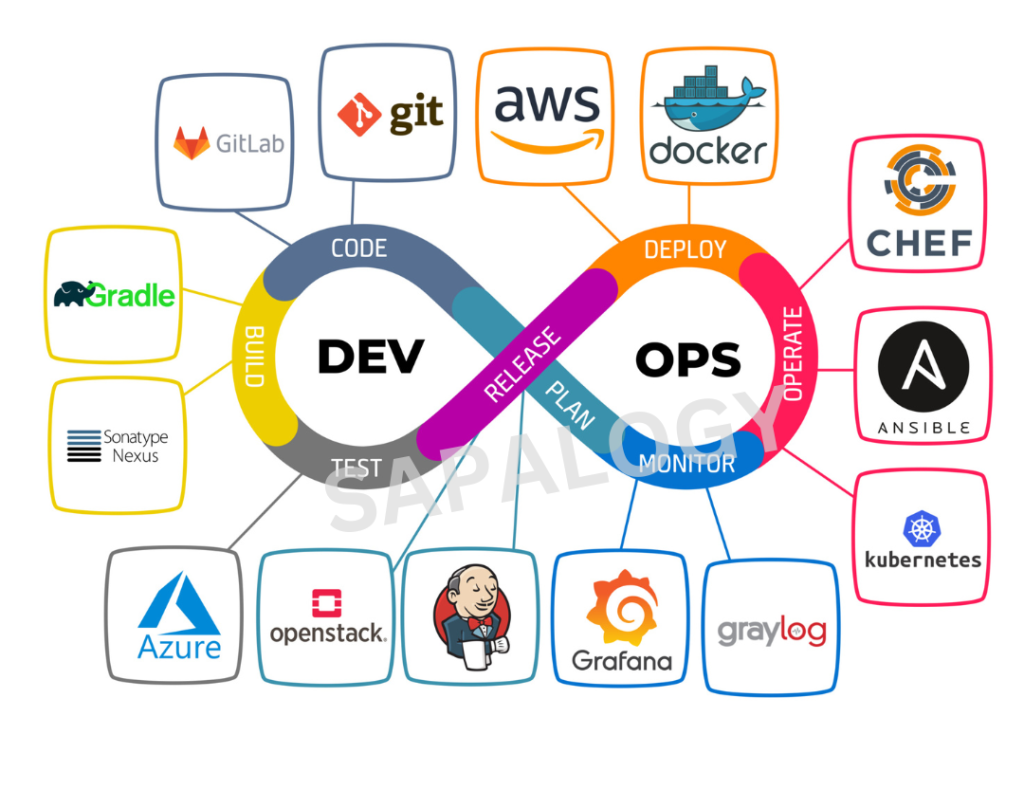
- DevOps lifecycle integrates improvement and operations to streamline software delivery thru continuous planning, coding, building, checking out, liberating, deploying, operating, and monitoring.
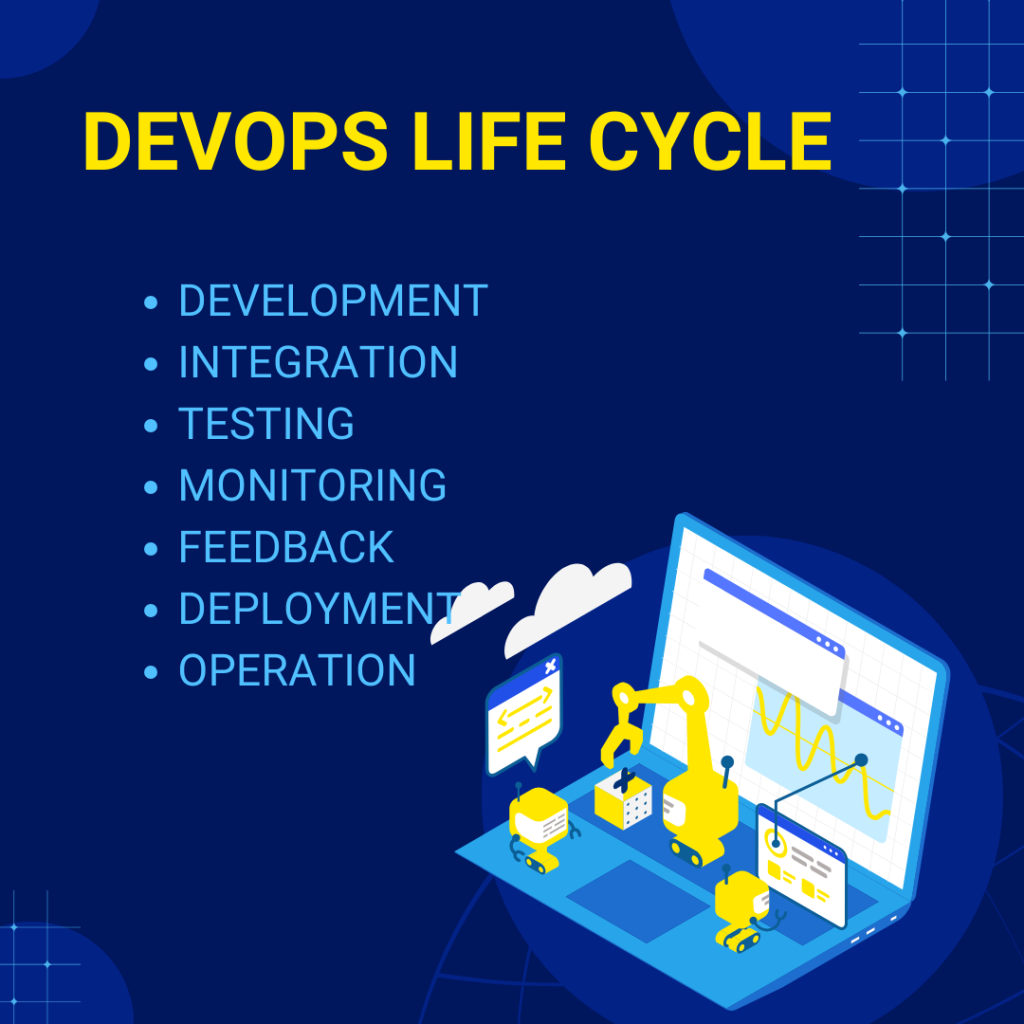
- Sapalogy taining provides DevOps training in offline and online mode. Starting end user, consulting, implementation, support with real time DevOps project based training.
- IT background, non IT background, freshers, experience can start their career in DevOps irrespective of their background.
- Sapalogy is the best training institute in nagpur with the 100% job opportunities.
Enquire now
Roadmap to learn DevOps with Sapalogy
1. Introduction
- What is DevOps?
- DevOps course
- DevOps certification
- DevOps jobs in india
- DevOps jobs in nagpur
2. Assessment and Planning
- Evaluate current development and operational processes.
- Identify bottlenecks, pain points, and areas for improvement.
- Define business goals and align them with DevOps objectives.
- Develop a comprehensive plan for implementing DevOps practices.
3. Culture and Collaboration
- Foster a culture of collaboration and communication between development and operations teams.
- Encourage the adoption of shared responsibilities and goals.
- Implement training programs to upskill teams on DevOps principles.
- Establish cross-functional teams to promote collaboration.
4.Infrastructure as Code (IaC)
- Introduce Infrastructure as Code (IaC) to automate the provisioning and management of infrastructure.
- Utilize tools like Terraform or Ansible to define and deploy infrastructure.
- Version control infrastructure code for traceability and repeatability.
- Automate testing and validation of infrastructure changes.
5. Continuous Integration (CI)
- Implement CI practices to automate the build and integration of code changes.
- Use tools such as Jenkins, GitLab CI, or Travis CI for automated builds.
- Run automated tests during the CI process to catch and address issues early.
- Establish a single source of truth for the code repository.
6. Continuous Deployment (CD)
- Extend automation to deployment processes with Continuous Deployment.
- Implement tools like Kubernetes, Docker, or OpenShift for containerization and orchestration.
- Automate the deployment pipeline to enable rapid and reliable releases.
- Monitor and analyze application performance in real-time.
7. Monitoring and Feedback
- Implement robust monitoring solutions for applications and infrastructure.
- Set up alerting systems to notify teams of potential issues.
- Gather feedback from monitoring to continuously improve processes.
- Conduct regular retrospectives to identify areas for refinement in the DevOps pipeline.
8. Resume preparation
- Include keywords.
- How to prepare resume.
- How to prepare resume for freshers.
- Show impact.
- Include soft skills.
- Be unique.
DevOps Training syllabus
Contact to know more!
Upcoming batch schedule for DevOps Training
Sapalogy provides flexible timings to all our students. Here is the DevOps Training Class Schedule in our branches. If this schedule doesn’t match please let us know. We will try to arrange appropriate timings based on your flexible timings.
| Course | Batch time | Offline | Online | Enquire now |
|---|---|---|---|---|
| DevOps | Starts every week | Nagpur | India | Enquire now |
| AWS | Starts every week | Nagpur | India | Enquire now |
Can’t find a batch you are looking for
DevOps Certification
- Sapalogy training certification will serve as proof that the courses were completed by Sapalogy.
- The DevOps certification offered by Sapalogy will equip you with valuable skills, enhancing your competitiveness in the job market.
- Sapalogy provides comprehensive guidance for your DevOps global certification, ensuring a 100% passing guarantee in examinations such as Salesforce Administration Certification, DevOps Platform Development Certification, and various other global exams.
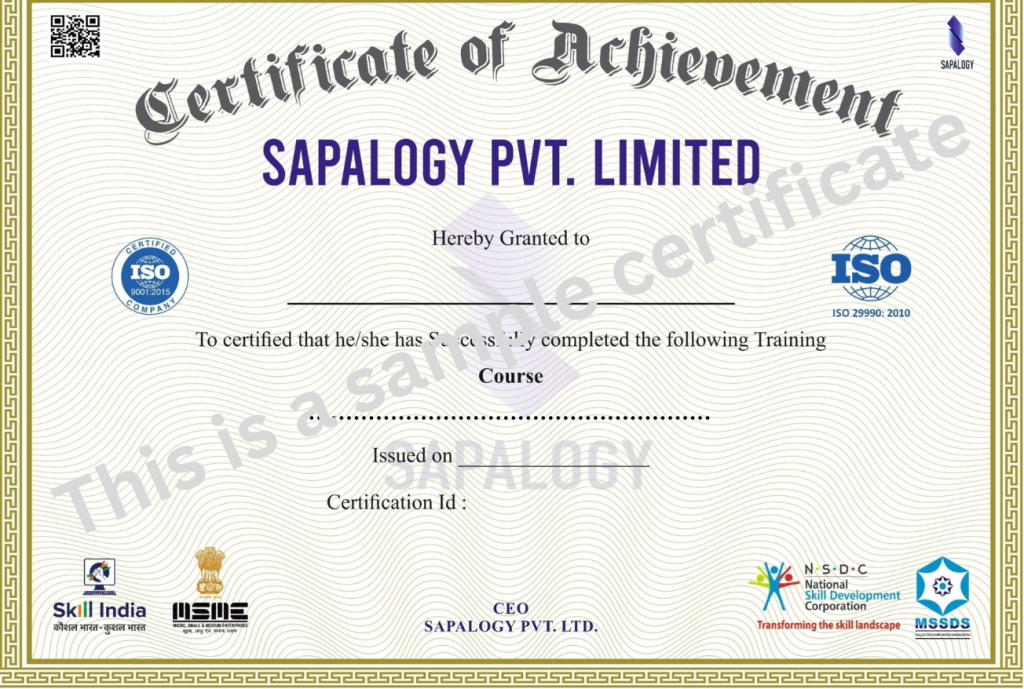
Key features of DevOps Training
Skills covered by Sapalogy
DevOps Projects
Training courses reviews
Our course review

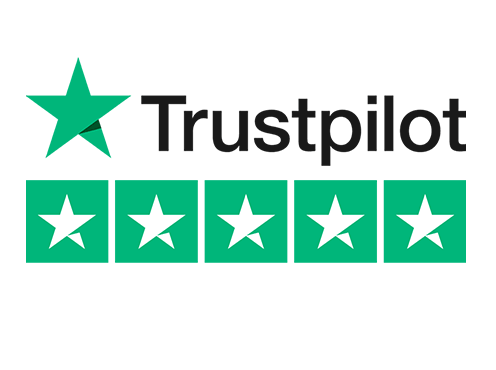

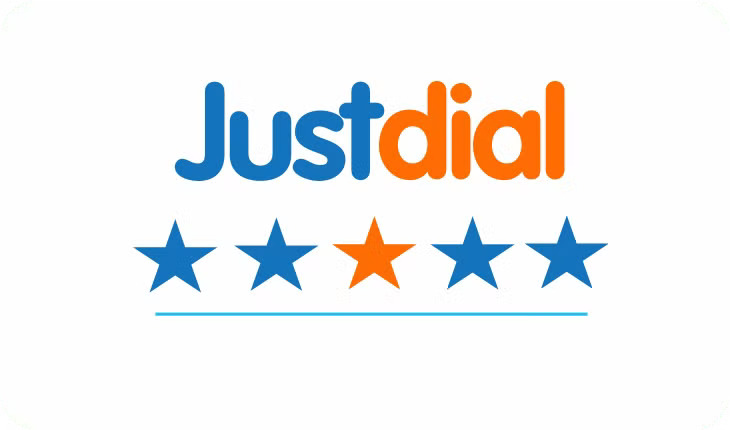


Our Alumni Works At

Frequently asked question
Feel free to ask

